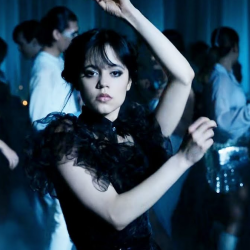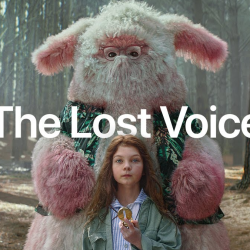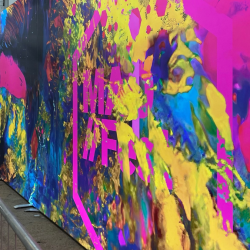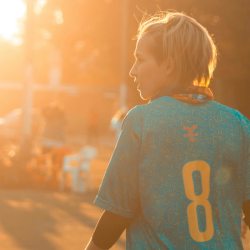If fashion is a vehicle of individual expression, trends are the wheels that keep it in motion
Why does one choose to wear a blue sweater rather than a yellow shirt? You might assume that the answer is rooted in personal preferences, or in the mood with which someone wakes up on any given day. But the truth is that our clothing choices are shaped by an intricate and complex machine, best explained by the sacred words of Miranda Priestly (played by Meryl Streep) in the film, The Devil Wears Prada (2006).
Priestly’s ‘cerulean sweater’ monologue briefly explains the traditional process of trend creation in fashion. Designers showcase collections with details (like colours, shapes, or accessories) that are picked up by other designers; which then gradually trickle down to high street collections, becoming popular among mainstream consumers. However, there is more to this story than what is being told. Trends do not always originate on the runways. More often than not, they spark from the streets: the fabric on the underground’s seats. The music blasting from someone’s earphones. The placement of a belt. Anything can be a clue for a trend forecaster who is trying to shape the garments of the future, by identifying social and cultural patterns in the present.
Contrary to other industries, where sales records may inform stocking decisions, fashion predictions rely on a more qualitative set of data. For instance, anticipating that a lockdown might boost the demand for lounge wear, or that a TV show could bring attention to a ‘ludicrously capacious bag’. And these societal shifts are difficult to measure — or at least they were until artificial intelligence came into play.
How AI is transforming trend forecasting
To understand how AI is transforming trend forecasting in fashion we can look at the case of Heuritech. The Paris-based company uses big data (extracted from social media) to predict geographical, demographic, or historical trends relevant to the fashion industry. First, Heuritech’s AI model selects images featuring fashion products and categorises their users into three groups: edgy, trendy, and mainstream. After that, the software analyses the same pictures to detect elements such as shapes, fabrics, prints, or colours. Through quantification it becomes easier to uncover trends and predict their future trajectories. Furthermore, this service can be applied across various regions, target audiences, and product categories.
There are several advantages to this process. Opting for artificial intelligence over human trend forecasters is not only less resource-intensive but also time-saving, particularly in an industry where trends are increasingly accelerating. These tools also help diversify collections, by including elements from minority groups that are usually overlooked by fashion elites. And from an environmental standpoint, the more accurate a trend prediction is the less waste will be produced by brands, since they know precisely what their customers will want to buy.
Nonetheless, there are some inaccuracies that need to be considered. The fact that Heuritech’s AI system only scans social media posts does not mean that it can predict what people will wear in real life. Instead, it forecasts what they will likely want to share online. Are the clothes featured on social media truly representative of our daily purchases? For most people (even influencers), that is not the case.
From a cultural perspective, it is also not difficult to comprehend why data analysis alone may be insufficient. Any artificial intelligence model can easily conclude that Gen Z is obsessed with Taylor Swift. However, who — or in this case, what — could have anticipated that 15-year-old girls would begin religiously watching football because of her? Not even ChatGPT 23.0 would have foreseen that.
Ultimately, there’s no doubt AI holds the potential to be a valuable tool in trend forecasting. However, in an industry as reliant on the nuances of human behaviour as fashion, quantitative data will not be enough to accurately predict consumer preferences. There must be synergy between the capabilities of AI, and the skilful interpretation of social and cultural movements that extend beyond social media patterns. And that is something that, as of today, no machine has been able to do.
Featured image: The Devil Wears Prada































